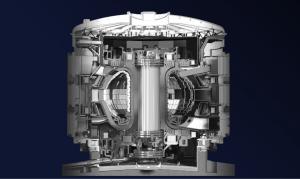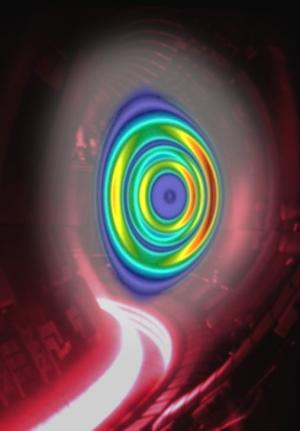Of Interest archive
2024

6 Nov 2024
New IAEA publication: Fusion Key Elements
The International Atomic Energy Agency (IAEA) has just published Fusion Key Elements, a document that aims to build a common…

6 Nov 2024
New IAEA publication: World Fusion Outlook 2024
The International Atomic Energy Agency (IAEA) has been promoting fusion energy research and development for over 60 years, and it continues…

25 Oct 2024
DIII-D tokamak passes 200,000 shots
The DIII-D tokamak team at General Atomics (San Diego, US) is celebrating a milestone this month—achieving, and passing, the 200,000th…

14 Oct 2024
Barge crossing for sector 5
Arriving at the French port of Fos-sur-Mer from Monfalcone, Italy, was only the first stage of transport for vacuum vessel sector 5. Next,…

14 Oct 2024
Coming soon: new ITER website
This month, ITER will be launching a new version of its public website. The change was compelled for technical reasons, including the need…

14 Oct 2024
JT-60SA is the world's largest tokamak
The JT-60SA experiment has been officially recognized by Guinness World Records as the world's largest tokamak, as measured in terms of…

7 Oct 2024
16 receive EUROfusion "Bernard Bigot" research grants
EUROfusion “Bernard Bigot” Researcher Grants (ERG) are awarded annually to promising fusion researchers at the post-doctoral stage of their…

7 Oct 2024
FuseNet Student Event 2024
On 21 November 2024, the European Fusion Education Network FuseNet will organize the FuseNet Student Event. All Bachelor and…

7 Oct 2024
China confers "Friendship Award" on Pietro Barabaschi
Late September, ITER Director-General Pietro Barabaschi is honoured with the 2024 Chinese Government Friendship Award in a ceremony in…

30 Sep 2024
New results from JET bode well for ITER and fusion reactors
New results from the JET tokamak offer positive news for tokamak reactor designs based on deuterium-tritium fuel, according to…

25 Sep 2024
“An important moment for humanity”
Speaking at a round table on the green energy transition at the Forum Aix-Marseille economic conference, head of the ITER Science &…

23 Sep 2024
Wendelstein 7-X stellarator starting new campaign
After Wendelstein 7-X generated a record plasma in February 2023 (lasting 8 minutes with an energy output of 1.3 gigajoules), the…

20 Sep 2024
Companies: See Europe's Fusion Technology Marketplace
Through a newly launched web platform—the European Fusion Technology Marketplace—Fusion for Energy (F4E), the European Domestic Agency…

16 Sep 2024
Call for collaboration: Fusion for Energy and the private sector
Fusion for Energy (F4E) has opened a Call of Expressions of Interest for collaboration with private sector fusion initiatives. Its aim is …

9 Sep 2024
4th and last Korean vacuum vessel sector takes the long way home
Manufactured by Hyundai Heavy Industries, the fourth and last vacuum vessel sector procured by Korea took to the sea on 24 August. The…

6 Sep 2024
13th ITER International School: register by 10 September
Pre-registration ends on 10 September 2024 for the 13th ITER International School, which will be held from 9 to 13 December…

5 Sep 2024
B1M construction channel films second video at ITER
Fred Mills of The B1M construction channel on YouTube returned to the ITER site this summer to report on ITER after a first…

3 Sep 2024
2024 Excellence in Fusion Engineering Awards (FPA)
The Board of Directors of Fusion Power Associates (FPA) has announced its 2024 Excellence in Fusion Engineering Awards. The…

26 Aug 2024
Vacuum vessel sector en route from Korea
A 440-tonne sector of the ITER vacuum vessel completed by HD Hyundai Heavy Industries Co., Ltd was transported to the Korean port of…

18 Jul 2024
Fusion industry report, 2024
The Fusion Industry Association has released its 2024 Global Fusion Industry Report. The report, which surveyed 45 companies,…

